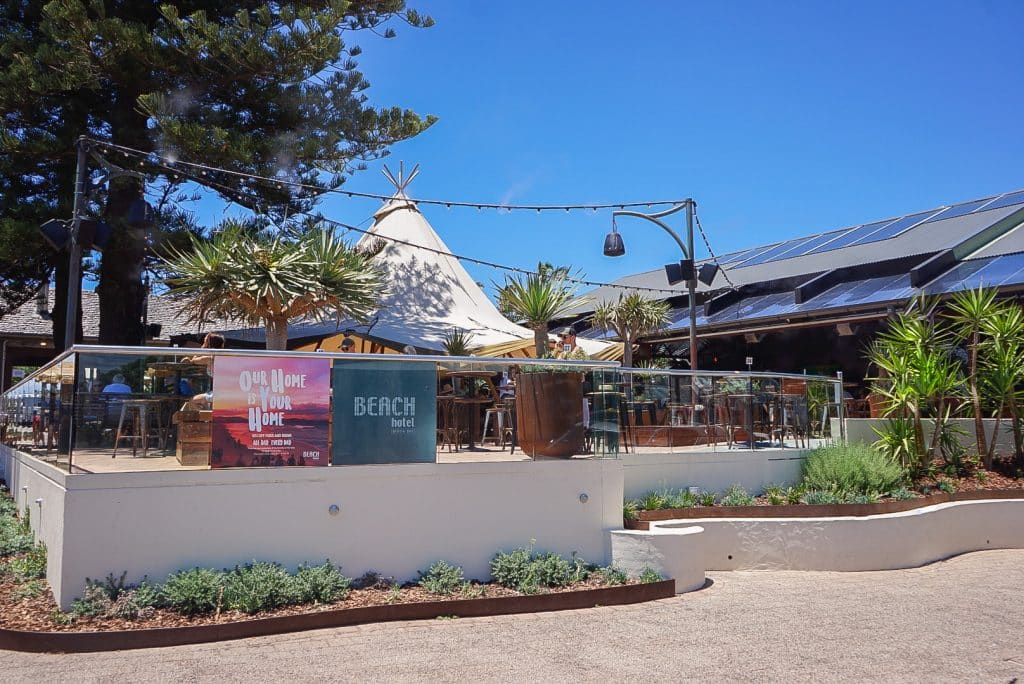
Brazil’s cuisine is marked by its huge regional diversity, exotic and unique ingredients and influences coming from indigenous inhabitants and historic migrants.
The world’s fifth largest nation is carved up into five regions – the South East, Amazon, North East, Central West and South – each with their own signature plates and culinary customs. Famous dishes include bolinho de feijoada, tacacá, moqueca and barbequed meat with rice and beans served as a staple across the country.
Brazil is also home to several unique savory snacks, often bought at bakeries, known as paderias, and snack bars known as lanchonetes.
Examples include coxinha (shredded chicken, covered in dough, battered and fried), kibe (an Arabic snack made from bulgur wheat, minced onions and finely minced beef) pastel (thin crust pies with assorted fillings, fried in vegetable oil) and pão de queijo (cheese bread).
The country’s enormous level of biodiversity produces rich, unique ingredients, such as açaí, guarana, jambu, and cassava (also called manioc), many of which are being actively used in a modern reinvention of Brazilian cuisine.
The Portuguese landed in Brazil in 1500 and, ever since, the country has seen waves of mass migration. More so than any of its neighbours, the country boasts enormous cultural diversity. Today’s popular dishes are influenced by the original indigenous inhabitants, Portuguese settlers, African slaves, Arab traders, the Spanish, German, Italian, East European and Japanese migrants of the early 20th century, and, most recently, migrants from a host of other Latin American nations, such as Peru and Bolivia.
The South East region, which includes the states of Rio de Janeiro; São Paulo; Minas Gerais and Espirito Santo has 59% of the population and the biggest purchasing power.
Changing tastes
From the early 2000s onwards, Brazil began to experience an economic boom that brought millions out of poverty and into a new consumer class, during which time the foodservice industry grew on average 14% per year until 2013. The growth is attributed to cultural changes, such as more women working (49% of the workforce today) as well as fewer people using maids to cook – a Brazilian tradition – due to increased labor costs. Such cultural changes have caused fundamental changes in the eating habits of Brazilians.
“Like Europe and the USA, Brazilians are now looking for convenience,” said Enzo Donna, founder of ECD Foodservice, a consultancy firm based in São Paulo.
In recent years, Brazil has found itself home to a new wave of upscale modern dining restaurants, such as DOM and Maní, both included in the world’s top 100 restaurants for 2016. Most are concentrated in São Paulo and Rio de Janeiro, which will host the Olympic and Paralympic Games in August.
In terms of fine dining, Brazilian food has seen something of a revival lately with a renewed emphasis on local ingredients and declining interest in Italian, French and Spanish options, traditionally preferred fine dining options. “This is undoubtedly the most striking change of the past 10 years,” said Heloisa Lupinacci, editor at Panelinha, one of Brazil’s leading food websites.
Brazil now boasts eight of the best restaurants in Latin America. São Paulo-born Alex Atala, owner of the world famous DOM – rated 11th best in the world – is a national hero commanding almost rock-star status.
Famous for making frequent trips to Brazil’s Amazon region to find new and exciting ingredients to use at his São Paulo restaurant, Atala recently began experimenting by using ants in his dishes.
This year, Atala opened a new restaurant Açougue Central (Central Butchery), which focuses on “whole animal” butchery, using unusual cuts of meat (such as shank and knuckle) usually discarded, as part of an attempt to steer fine dining into a more sustainable direction.
Brazil’s second top rated restaurant Maní (rated 51 in the world) works with influences from Brazil, Spain and Italy. Husband and wife team Helena Rizzo and Daniel Redondo, who met at top Girona restaurant El Celler de Can Roca, have secured Maní’s reputation with their signature dish of manioca, baked and served with tucupi froth, coconut milk and a dash of white truffle olive oil.
Peruvian food is also becoming popular, especially in São Paulo, which is seeing a growing number of Peruvian restaurants owned and run by Peruvian immigrants, one of the most famous being Rinconcito Peruano, which now has two branches in São Paulo’s decadent but quickly transforming city center.
Global trends like gourmet burgers, hot dogs and craft beer are popular too. Since 2014, São Paulo has had a huge increase in the number of sales being made from food trucks, offering luxury foods at around half of what you would pay in a restaurant.
Global giant
The Brazilian foodservice market is the fourth biggest in the world. According to ECD Foodservice, Brazil’s foodservice market is made up of roughly 1 million establishments employing some 6.5 million people with a 2015 turnover of some $112bn.
According to Euromonitor, more than 98% of establishments are national independents. Selfservice and full-service restaurants command the market share at 23%, with paderias – where clients can order snacks, sandwiches, coffee or full meals – at 15%, fast food accounts for a 13% share, bars 12%, lanchonetes serving hamburgers and juices at 11%.
Brazil’s most popular type of restaurant is the ‘kilo’ self-service, where customers buy their food by weight. A kilo restaurant will typically serve tens of dishes with a fixed price – for example, 100 grams for $1– and customers choose how much of each they want. These restaurants are popular because the client effectively gets to choose their own price.
Kilo restaurants are especially popular during working weekdays, while barbeque restaurants, known as churrascarias, pizza restaurants and traditional à la carte restaurants tend to be more popular during the weekends.
Franchise explosion
The number of franchised food chains in Brazil has almost doubled since 2009 to a total of 680 chains at the end of 2014, according to the Brazilian Franchise Association. McDonald’s led fast food in 2015, recording a brand value share of 28% – a slight decline from the previous year, which can mainly be attributed to increasing competition from other fast food chains, especially Burger King and Subway. Habib’s – a low budget Arabic style fast food chain – is Brazil’s biggest outlet, with 475 restaurants, mostly in São Paulo. Spoleto – an Italian style chain mainly in shopping malls – is second biggest with 348 restaurants, and present in almost all Brazilian states. Viena is the third biggest chain, with over 70 restaurants, mostly self-service by the kilo.
In terms of international operators, Outback Steakhouse and Pizza Hut were two of the leading brands in chained full-service restaurants in 2015, recording respective value shares of 22% and 7%.
Economic woes
Brazil is passing through its worst economic crisis in decades with 11 million unemployed. In 2015, the foodservice sector saw just 5% growth. According to Euromonitor, full-service restaurants’ growth rates are slowing down as the economic situation worsens, with consumers looking for cheaper meal options.
Given that full-service restaurants are usually the most expensive, many are opting to eat in other outlets, such as kiosks, which saw some of the highest growth last year at 15%.
Casual dining spots, such as Outback, have grown during the crisis, as have other US-style outlets, as well as Asian fast food outlets. However, the crisis is not affecting fine dining options, such as those costing $20 a plate upwards, as the section of the population with this purchasing power is largely not affected by the economic downturn.
Institutional catering accounts for 7% of Brazil’s foodservice market, producing 1.8 million to 2 million plates a day in factories, schools and hospitals. While there are some 170 competing firms, three main groups dominate and have long been market leaders for more than 10 years: UK’s Compass Group, Brazil’s Sapore and France’s Sodexo. Sodexo has been in Brazil since 1977, reaching 7.5 million consumers, with 71,000 clients, 41,000 employees and more than 100 professions, acquiring Brazil’s second largest foodservice firm, Puras, in 2011.
Back to the roots
Recent years have seen an intense focus on using Brazilian ingredients in fine dining. Today, the sector focus is moving away from traditional European options, such as Italian or French, and embracing Brazil’s enormous biodiversity and rich regional traditions. Rodrigo Oliveira, of Mocotó in São Paulo, says: “Today, the main trend is valuing our ground, our products, our incredible possibilities because Brazil has multiple biomes and products that we do not yet know the potential of. We cooks devote ourselves increasingly to bringing our authentic flavor to the table.” Brazil is home to eight of the 50 best restaurants in Latin America, according to the 2015 list:
DOM (fourth) São Paulo
Mani (eighth) São Paulo
Roberta Sudbrack (14th) Rio de Janeiro
Lasai (16th) Rio de Janeiro
Olympe (23rd) Rio de Janeiro
Epice (26th), São Paulo
Mocotó (35th), São Paulo
Remanso do Bosque (38th), Belém
THE CONSULTANTS’ VIEW
Marco Amatti FCSI, Mapa Assessoria:
“Brazil has great potential for growth, and despite the decrease in economic activity (a situation that is already reversing), caused mainly by politics, the foodservice sector continues to grow. Even during this slight recession, asset prices have fallen and it is an excellent time for investment. The so-called crisis comes with opportunities for improvement in processes, brand repositioning and the search for new market niches.
“The opportunities are many among new trends: more open spaces, shared and multiservice operations, search for products with lower, delivery and takeaway growth, use of local and regional raw materials, and investment in technology. On the other hand, there is a huge space for food industry work in foodservice supply; convenience stores and small spaces in shopping centers are growing in numbers and there is an opportunity to develop this area of action.”
Nadja Valadares, Cozinha Limpa, FCSI associate member:
“We have a rich regional gastronomic diversity, due to having so many different cultures, agriculture, livestock and fish. I expect significant growth due to the increasing needs of the population in seeking to eat better, in or out. Only 10 years ago, we used to cook at home and carry a lunchbox to work as there were not many restaurants. Today this scenario is reversed, there is a wide range of restaurants, eating out is healthier, tastier and saves time.
“Using consultants is still a ‘novelty’ for Brazilians, who largely do not see the need for a consultant. We have to go further in spreading the importance of a consultant, not only for architectural design, but for functionality and management.”
Simone Galante, Galunion, FCSI associate member:
“Despite the economic crisis, the market has been growing and the most important drivers are: social mobility of low and middle classes, urbanization, and working trends (less time, more traffic, more women at work). An important challenge for restaurants is in the arena of operational excellence. One of the biggest problems of the sector is due to the high levels of turnover and training gaps. Important food operators are struggling to find a way to engage their teams and retain talents, as well as understand how important it is to train their staff.
“Some trends we’ve noticed are: the fast casual and QSR plus concept; private equity funds investing in the foodservice market; more healthier choices in response to the obesity problem; and a rise in better home delivery.”
KEY BRAZILIAN FOODS AND DISHES:
Cassava, manioc and tapioca – a starch extracted from the cassava root often used as a thickening agent. Manioc is the root of the cassava plant that must be cooked to be edible and then often used in soups, stews, gravies and dumplings.
In Brazilian cuisine, tapioca is made into a coarse flour for beiju, a flatbread resembling a grainy pancake that is buttered and eaten like toast, usually for breakfast, or topped with either sweet or savory foods, such as fruit, chocolate and ground coconut or cheese, ham, bacon and other meat.
Sagu – a southern Brazilian, pudding like dessert made by simmering tapioca pearls, cinnamon and cloves in red wine.
Pão de queijo (cheese bread) – made with tapioca flour, minas cheese, eggs and butter and baked in the oven.
Tutu de feijão – mashed beans with cassava flour.
Casabe is a thin flatbread made from unleavened cassava root and eaten like crackers.
Bolinho de feijoada – fried dough balls filled with a hearty black bean stew made with beef and/or sausage.
Açaí – considered a trending superfood, this species of palm tree native to the rainforests of South America, produces grape-like berries that, when eaten in whole or juice form, have strong, antioxidant properties.
Brazil nuts – these “complete protein” nuts are rich in selenium and thought to help stimulate growth and repair, improve digestion, boost heart health, balance hormone function and reduce the signs of ageing, among other health benefits. Like with açaí, the 2016 Games Organizing Committee has committed to sourcing these nuts from fair trade and sustainable sources in Brazil.
Sam Cowie




